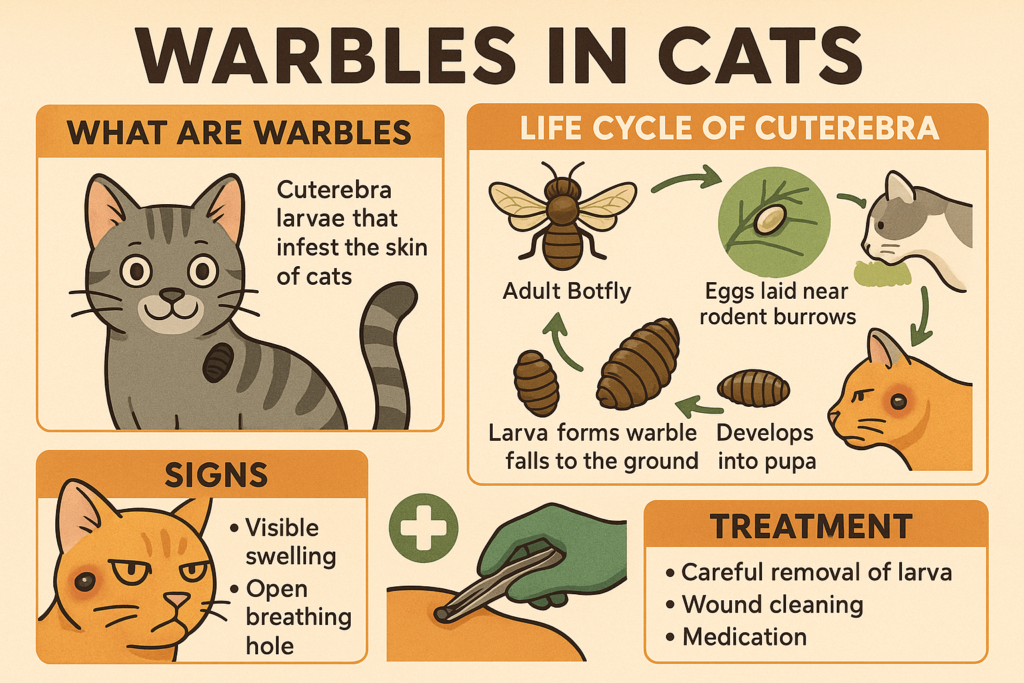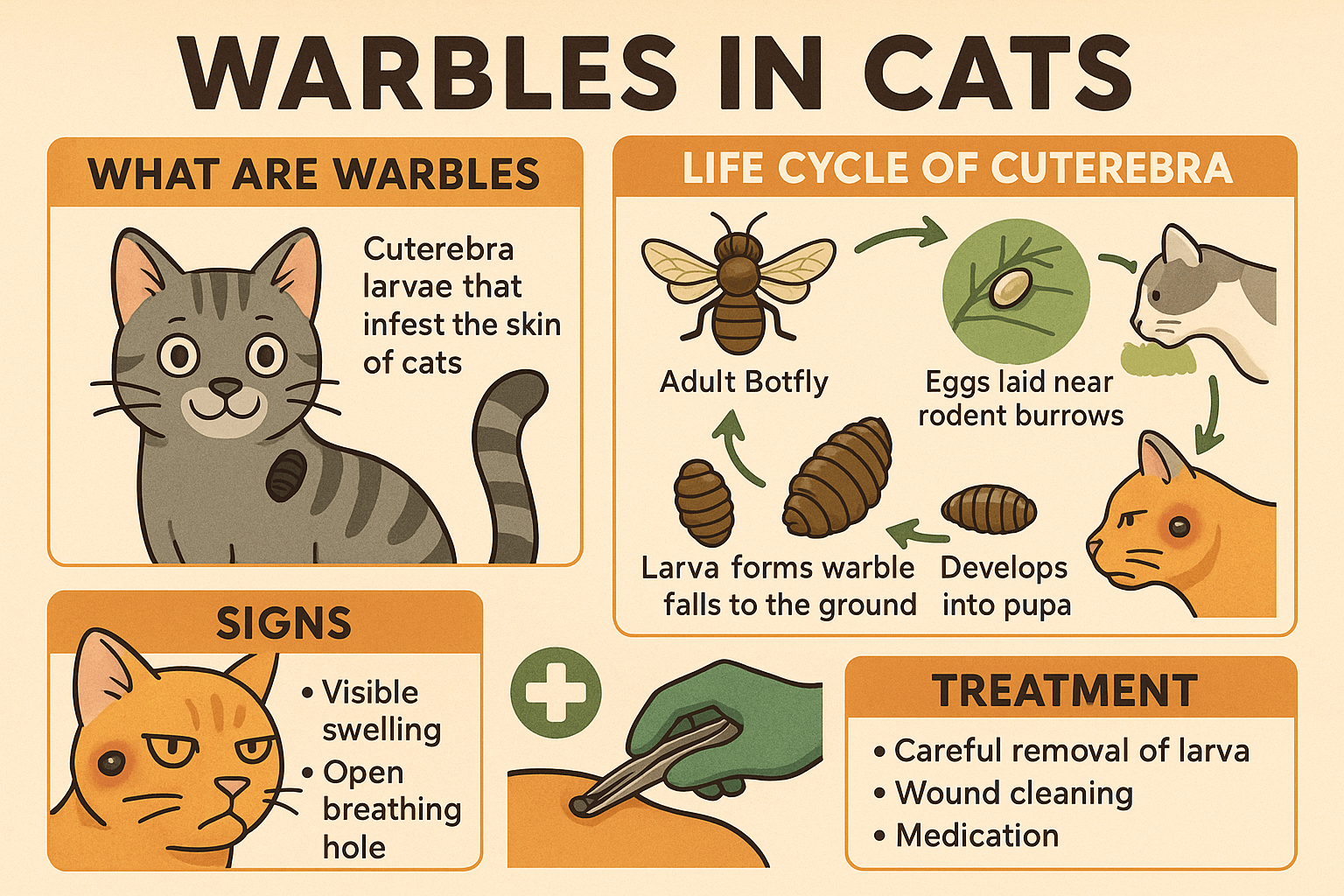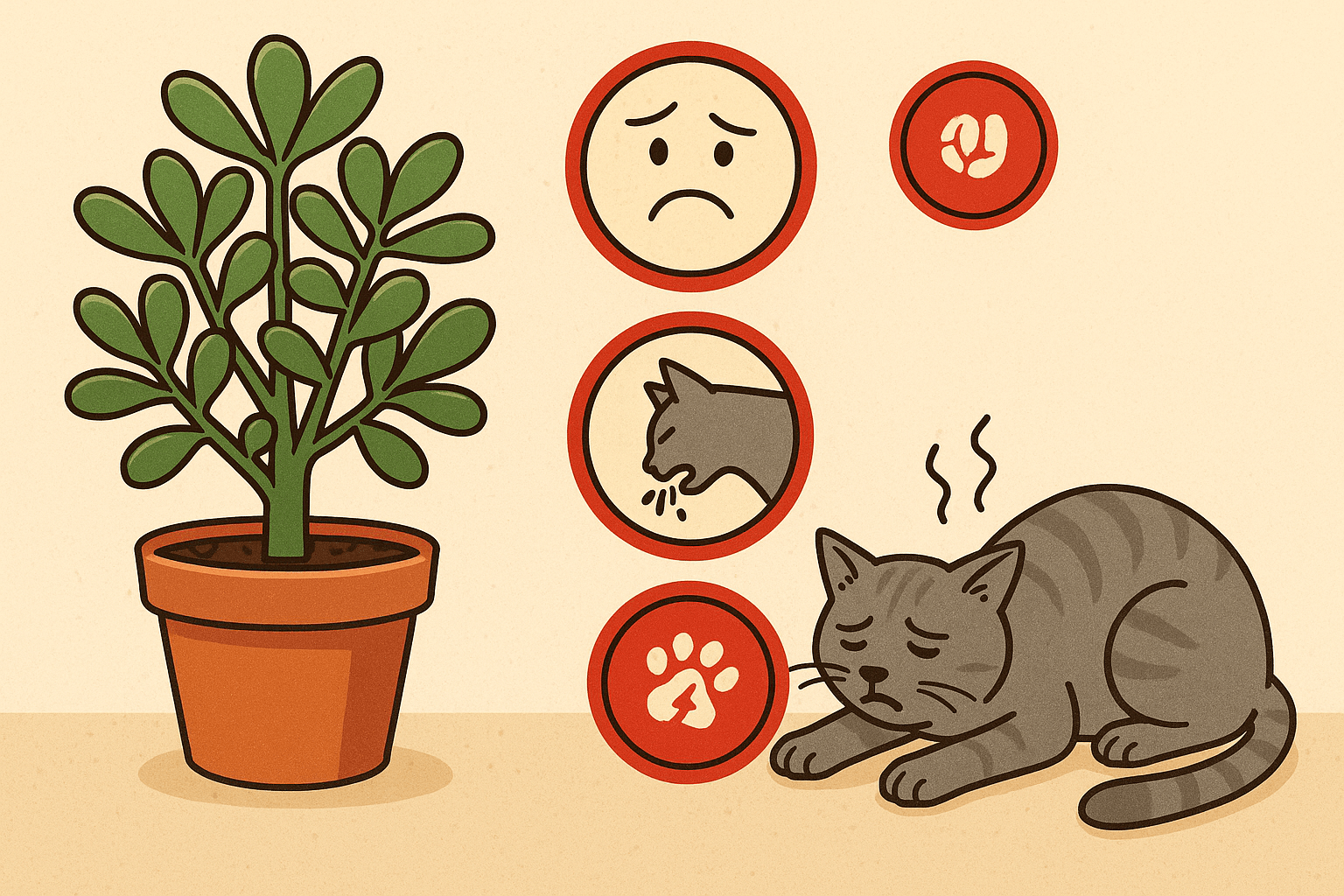Warbles in Cats: What Every Cat Owner Should Know
Warbles, though uncommon in cats, are a condition that every pet owner should be aware of. Caused by the larvae of botflies, warbles can lead to discomfort and potential health risks if left untreated. These parasitic invaders burrow under the skin, creating lumps that can alarm even the most experienced cat owners. Understanding what warbles are, how they affect cats, and what steps to take if your feline friend is affected is crucial for ensuring their well-being. In this blog post, we’ll explore everything you need to know about warbles in cats, from identification to prevention and treatment.
What Are Warbles and How Do They Affect Cats?
Warbles are caused by botfly larvae, which create small tunnels beneath the skin where they develop. While more common in other animals like rodents or rabbits, cats can also fall victim to these parasites. Here’s what you need to know about how warbles impact your cat’s health.
Skin Irritation and Discomfort:
The presence of larvae under the skin causes itching, swelling, and irritation, making your cat restless and uncomfortable.Visible Lumps or Bumps:
Warbles often appear as raised, round lumps on the skin, typically around the head, neck, or limbs, where the larvae reside.Risk of Infection:
If the warble ruptures or is scratched open, it can lead to secondary bacterial infections, complicating the healing process.Behavioral Changes:
Cats with warbles may exhibit unusual behaviors such as excessive grooming, biting at specific areas, or avoiding touch due to pain.Rare but Serious Complications:
In severe cases, larvae can migrate to internal organs, posing significant health risks if not addressed promptly.
Understanding these effects highlights the importance of early detection and proper treatment to protect your cat’s health.

How to Identify Warbles in Cats
Recognizing the signs of warbles early can prevent complications and ensure timely treatment. Look out for these key indicators that your cat may be affected.
Unusual Swelling or Lumps:
Check your cat’s skin regularly for any new or suspicious bumps, especially in areas exposed to outdoor environments.Drainage Holes or Pus:
Warbles often have a tiny breathing hole through which the larva receives oxygen, sometimes accompanied by discharge.Intense Scratching or Licking:
If your cat obsessively scratches or licks a particular spot, it could indicate irritation caused by a warble.Localized Hair Loss:
Cats may lose fur around the affected area due to constant grooming or irritation from the larva.Changes in Appetite or Energy Levels:
Discomfort from warbles can lead to decreased appetite or lethargy, signaling an underlying issue.
By staying vigilant and recognizing these symptoms, you can act quickly to address warbles before they worsen.
Check this guide 👉What to Do About a Hole in Your Cats Skin: Best 7 Tips!
Check this guide 👉Parasites in Cats: Best 7 Expert Tips!
Check this guide 👉Tapeworms in Cat Vomit: Best 7 Expert Tips!
Signs Your Cat May Have Warbles | Steps to Take If You Suspect Warbles |
|---|---|
Swollen or raised lumps on the skin | Isolate the affected area to prevent scratching |
Tiny breathing holes in the lump | Avoid squeezing or attempting removal yourself |
Excessive licking or grooming | Contact your veterinarian immediately |
Pus or discharge near the lump | Keep the area clean to reduce infection risk |
Behavioral changes (restlessness) | Monitor for additional symptoms closely |
Treatment Options for Warbles in Cats
If you suspect your cat has warbles, prompt veterinary care is essential to ensure safe and effective treatment. Here are some common approaches used to address this condition.
Professional Removal by a Veterinarian:
A vet will carefully extract the larva using sterile tools to avoid rupture and minimize the risk of infection.Antibiotics for Secondary Infections:
If the warble site becomes infected, antibiotics may be prescribed to clear up the infection and promote healing.Topical Treatments:
Medicated ointments or creams may be applied to soothe irritated skin and prevent further complications.Pain Management:
Depending on the severity, pain relief medications might be administered to keep your cat comfortable during recovery.Follow-Up Care:
Regular check-ups ensure the wound heals properly and that no additional larvae are present elsewhere on the body.
With proper treatment, most cats recover fully from warbles without long-term effects.
Preventing Warbles in Cats
Prevention is always better than cure when it comes to protecting your cat from warbles. Follow these tips to minimize the risk of infestation.
Limit Outdoor Exposure:
Keeping your cat indoors reduces the likelihood of encountering botflies or other parasites.Regular Grooming Sessions:
Frequent brushing and inspections help identify any abnormalities on your cat’s skin early.Inspect After Outdoor Adventures:
If your cat spends time outside, check their coat and skin thoroughly after each outing.Maintain a Clean Environment:
Keep your home and yard free of debris or rodent activity, which can attract botflies.Use Preventative Parasite Treatments:
Consult your vet about flea and tick preventatives, some of which may offer protection against botflies as well.
By taking proactive measures, you can significantly reduce the chances of your cat developing warbles.
Common Misconceptions About Warbles
Misinformation about warbles can lead to unnecessary panic or improper treatment. Clearing up these misconceptions helps cat owners respond appropriately.
Myth: Warbles Only Affect Outdoor Cats:
While outdoor cats are at higher risk, indoor cats can also be exposed, especially if they interact with other animals.Myth: Warbles Heal on Their Own Without Intervention:
Left untreated, warbles can lead to serious complications, including infections or tissue damage.Myth: Squeezing Out the Larva Is Safe:
Attempting to remove the larva manually can cause injury or push it deeper into the skin.Myth: Warbles Are Highly Contagious:
Warbles are not directly contagious between cats, but shared environments can increase exposure risks.Myth: Flea Treatments Don’t Help Prevent Warbles:
Some flea and tick preventatives offer cross-protection against botflies, making them a valuable tool.
Dispelling these myths ensures you approach warbles with accurate knowledge and appropriate action.
Signs Your Cat May Be at Higher Risk for Warbles
Certain factors increase the likelihood of your cat encountering warbles. Identifying these risks allows you to take extra precautions.
Frequent Outdoor Access:
Cats who roam freely outdoors are more likely to encounter botflies or infected animals.Living Near Wooded Areas:
Botflies thrive in wooded or rural environments, making nearby habitats a potential threat.Contact with Rodents or Rabbits:
These animals are common hosts for botflies and can transmit larvae indirectly to cats.Poor Hygiene Practices:
Neglecting regular grooming or environmental cleaning creates opportunities for parasites to thrive.Weakened Immune System:
Cats with compromised immune systems may struggle to fight off infections related to warbles.
Being aware of these risk factors helps you tailor your prevention strategies effectively.
Natural Remedies to Support Recovery After Warble Treatment
While professional treatment is essential, natural remedies can complement veterinary care and aid in your cat’s recovery.
Aloe Vera Gel:
Applying diluted aloe vera gel can soothe irritated skin and promote faster healing of the affected area.Coconut Oil:
This natural moisturizer helps repair damaged skin and has mild antibacterial properties.Calendula Cream:
Known for its anti-inflammatory benefits, calendula cream can reduce swelling and discomfort.Epsom Salt Soaks:
For external wounds, a warm Epsom salt soak can draw out impurities and reduce inflammation.Probiotics for Gut Health:
Adding probiotics to your cat’s diet supports overall immunity and aids in recovery from stress or illness.
These remedies provide gentle support but should never replace professional veterinary advice or treatment.
Frequently Asked Questions About Warbles in Cats
Can indoor cats get warbles?
While rare, indoor cats can still contract warbles if they come into contact with infected animals or environments.
Are warbles dangerous for cats?
Most cases are not life-threatening, but complications like infections or migration to internal organs can occur if untreated.
Can I remove a warble myself?
No, attempting to remove a warble at home can cause injury or infection. Always consult a veterinarian.
How do cats get warbles?
Cats typically acquire warbles through direct exposure to botfly larvae, often in outdoor settings.
Is warble treatment expensive?
Treatment costs vary depending on the severity of the case, but early intervention generally reduces expenses.
Protecting Your Cat from Warbles
While warbles in cats are relatively uncommon, understanding their causes, symptoms, and treatments empowers you to safeguard your pet’s health. By staying observant, practicing preventative measures, and seeking veterinary assistance when needed, you can ensure your feline companion remains happy and healthy. Remember, a little vigilance goes a long way in keeping these pesky parasites at bay. With proper care and attention, your cat can enjoy a life free from the discomfort of warbles.
Understanding Folliculitis in Cats: Best 7 Expert Tips! Discover causes, symptoms, and treatment options to help your cat recover from folliculitis and maintain healthy skin.
Can Cats Eat Raw Beef? Best 7 Expert Tips! Discover the benefits, risks, and safety guidelines for feeding raw beef to your cat, ensuring a healthy and balanced diet.
Is the Jade Plant Toxic to Cats? Best 7 Expert Tips! Discover expert advice on jade plant toxicity, symptoms of poisoning, and how to keep your cat safe around this popular houseplant.
Contact Dermatitis in Cats: Best 7 Expert Tips! Discover expert advice on identifying, preventing, and treating contact dermatitis in cats to keep your feline friend comfortable and healthy.





